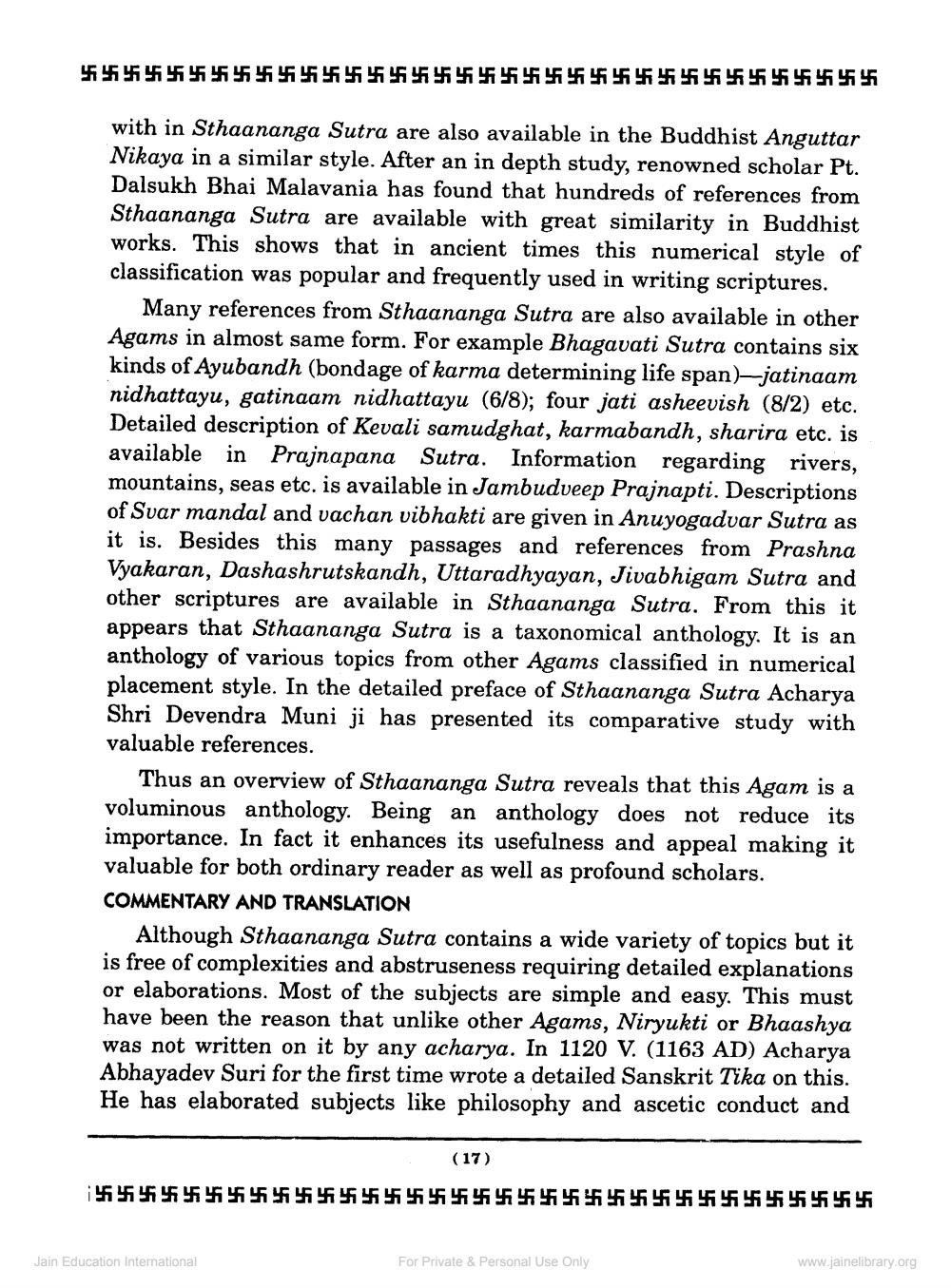________________
445 44 45 46 47 454 455 456 455 456 457 455 456 457 451 454 4
55 456
457 455 456 457 455 456 457 454 455 45
with in Sthaananga Sutra are also available in the Buddhist Anguttar Nikaya in a similar style. After an in depth study, renowned scholar Pt. Dalsukh Bhai Malavania has found that hundreds of references from Sthaananga Sutra are available with great similarity in Buddhist works. This shows that in ancient times this numerical style of classification was popular and frequently used in writing scriptures.
Many references from Sthaananga Sutra are also available in other Agams in almost same form. For example Bhagavati Sutra contains six kinds of Ayubandh (bondage of karma determining life span)-jatinaam nidhattayu, gatinaam nidhattayu (6/8); four jati asheevish (8/2) etc. Detailed description of Kevali samudghat, karmabandh, sharira etc. is available in Prajnapana Sutra. Information regarding rivers, mountains, seas etc. is available in Jambudveep Prajnapti. Descriptions of Svar mandal and vachan vibhakti are given in Anuyogadvar Sutra as it is. Besides this many passages and references from Prashna Vyakaran, Dashashrutskandh, Uttaradhyayan, Jivabhigam Sutra and other scriptures are available in Sthaananga Sutra. From this it appears that Sthaananga Sutra is a taxonomical anthology. It is an anthology of various topics from other Agams classified in numerical placement style. In the detailed preface of Sthaananga Sutra Acharya Shri Devendra Muni ji has presented its comparative study with valuable references.
Thus an overview of Sthaananga Sutra reveals that this Agam is a voluminous anthology. Being an anthology does not reduce its importance. In fact it enhances its usefulness and appeal making it valuable for both ordinary reader as well as profound scholars. COMMENTARY AND TRANSLATION
Although Sthaananga Sutra contains a wide variety of topics but it is free of complexities and abstruseness requiring detailed explanations or elaborations. Most of the subjects are simple and easy. This must have been the reason that unlike other Agams, Niryukti or Bhaashya was not written on it by any acharya. In 1120 V. (1163 AD) Acharya Abhayadev Suri for the first time wrote a detailed Sanskrit Tika on this. He has elaborated subjects like philosophy and ascetic conduct and
(17)
www.jainelibrary.org
Jain Education International
For Private & Personal Use Only




